This lunge photo was a second late. A humpback lunged toward the boat through the herring ball but has already closed its mouth. It should be more like tomorrow….
Killer whales and humpback whales are often seen during our wildlife tours. There are resident whales and transient whales that can be seen feeding and playing in our waters.
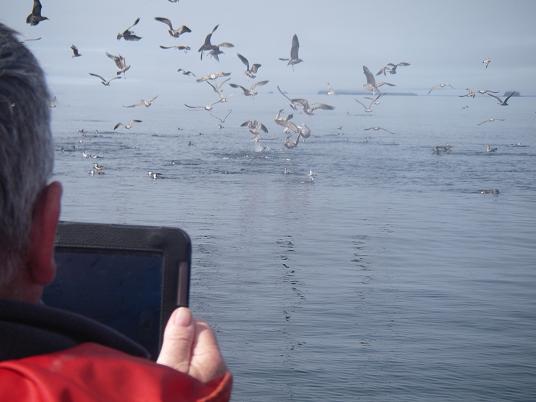
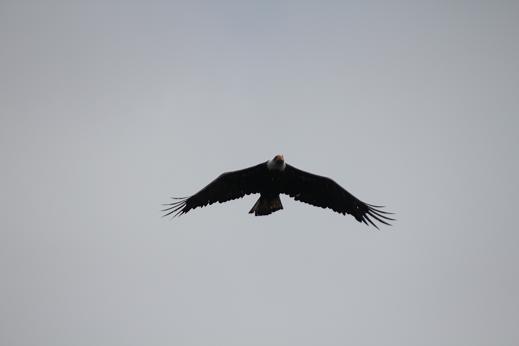
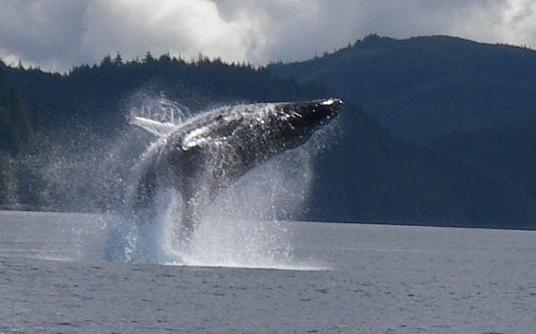
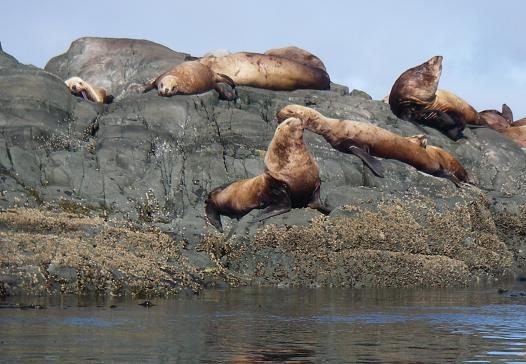 AKA Steller sea lion, Steller’s sea lion, northern sea lion are in are viewing area all year around but much more abundant in late May to early June on their way North and again in late August through September when returning south. These male Steller sea lions average a nose-to-tail length of 3 m (9 ft.) and weigh about 700 kg (1500 lbs.). When dry, Steller sea lions are a tan to golden-brown color and darken to a chocolate brown on their flippers and underside. They appear dark brown or black when wet.
AKA Steller sea lion, Steller’s sea lion, northern sea lion are in are viewing area all year around but much more abundant in late May to early June on their way North and again in late August through September when returning south. These male Steller sea lions average a nose-to-tail length of 3 m (9 ft.) and weigh about 700 kg (1500 lbs.). When dry, Steller sea lions are a tan to golden-brown color and darken to a chocolate brown on their flippers and underside. They appear dark brown or black when wet.
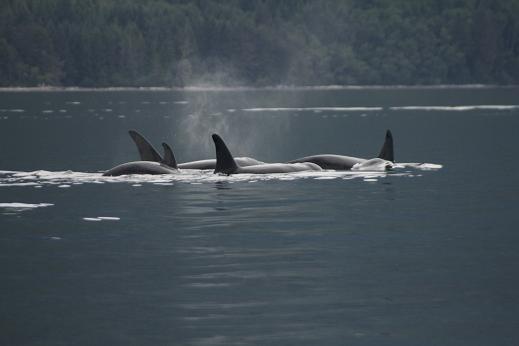 Looks like a good photo of some resident killer whales until you look closely and realize that all the dorsal fins are not going in the same direction. Resident orcas are the ones that eat salmon. This was an occasion when they stopped travelling and started to feed. From this point on they stayed in the ripe tide off Craycroft Point and fed on salmon for over an hour. We turned off our engine and sat in the ripe while the orca fed all around the boat.
Looks like a good photo of some resident killer whales until you look closely and realize that all the dorsal fins are not going in the same direction. Resident orcas are the ones that eat salmon. This was an occasion when they stopped travelling and started to feed. From this point on they stayed in the ripe tide off Craycroft Point and fed on salmon for over an hour. We turned off our engine and sat in the ripe while the orca fed all around the boat.
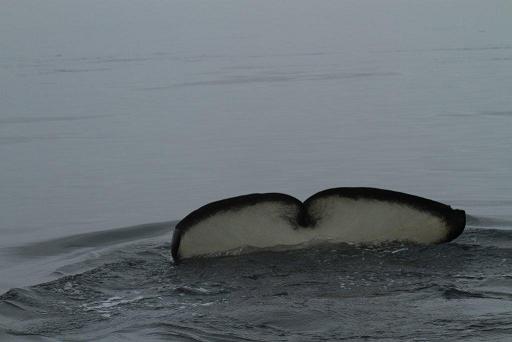
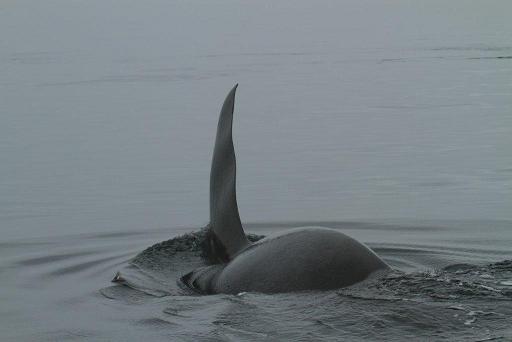 However as the last photo shows that this is a killer whale (orca) not a humpback whale. Killer whales are identifies by their dorsal fin and the accompanying saddle patch. This last photo was actually the first is the series but if I had posted them in the correct order there would be nothing to write.
However as the last photo shows that this is a killer whale (orca) not a humpback whale. Killer whales are identifies by their dorsal fin and the accompanying saddle patch. This last photo was actually the first is the series but if I had posted them in the correct order there would be nothing to write.

Just like that our season has come to an end. I would like to thank all of our wonderful guests and staff who made this year a huge success. I am happy to stay that all of our team is planning to return next season. We are actively taking bookings, with dates starting June 1 2025. Hope to see many of you next season.
The wildlife viewing this season was awesome. A couple highlights that come to mind was the shear number of salmon in our local rivers, as well as the abundance of Resident Orca. With salmon returns being so strong this year, we were happy to see bears in excellent condition. By the end of our season most of the bears had packed on a lot of weight and were getting very “picky” about what parts of the salmon they would eat. Hopefully this will translate into more cubs being born this winter. Another positive was the weather conditions. We had enough rain to keep our fire risks low and it made for some excellent wild berries. The bears took full advantage of this, with the berry season extending far past its normal conclusion. This did mean that we had to work hard to find bears during our summer season, (as they were often feeding on the berries deep into the forest), but moving forward it is excellent that they had such an abundant food supply. The Humpbacks also didn’t disappoint, with great numbers and a few new calves returning with their mothers to feed. After a slower year for resident Orca sightings, this season was one of the best that I can remember. In fact as Im writing this the A62 and A23’s are still being spotted in the area by dedicated biologists. Strong numbers of Chinook and Chum salmon are providing them with a steady food source. There are a lot of positive signs and we are hopeful that 2025 will be another great season.
Over the winter and spring we will be doing some repairs and maintenance. We plan on having a new cedar front deck built in time for the 2025 season, as well as new ceilings and paint in parts of the lodge and rooms. Theres always projects on the go.
Felix, Julien, Ryan, Zack and Myself all look forward to welcoming guest in June. See everyone soon.
Angus Reid
Visit our Blog